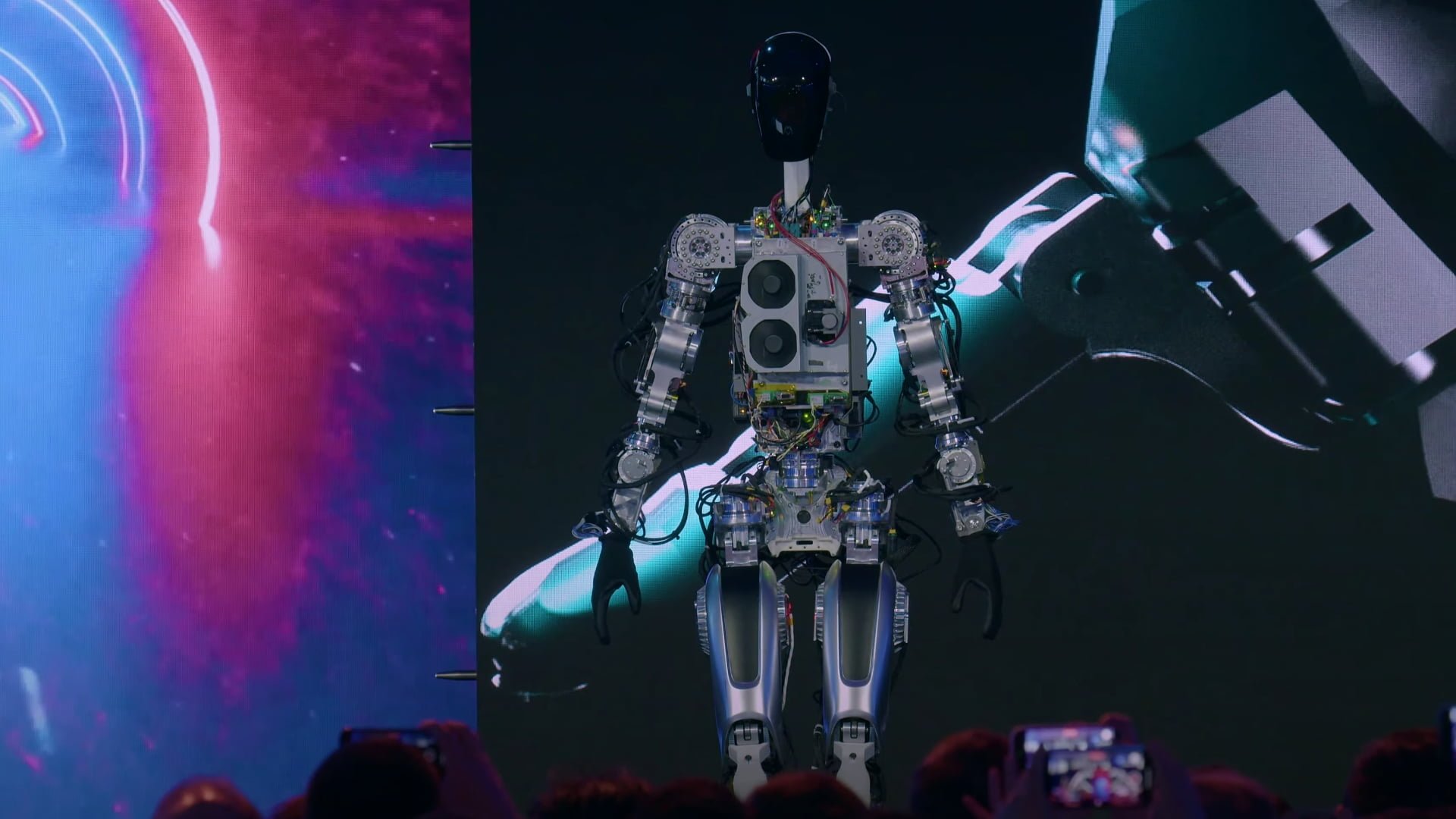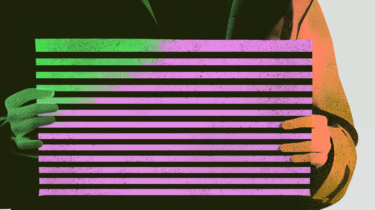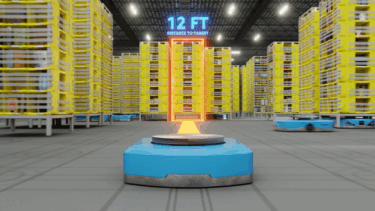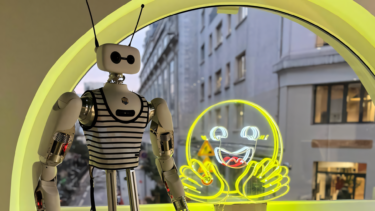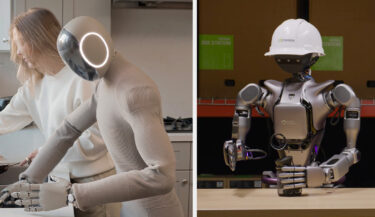Robotics experts give their views on Tesla's recently unveiled AI robot. What do they think of the prototype and its capabilities?
At Tesla's AI conference this year, Elon Musk presented the first prototype of his humanoid robot project "Optimus". The bot, christened "Bumble C," walked across the stage on its own and (maybe) impressed (parts of) the audience with waving and dancing acts.
Musk then used a pre-recorded video to show Bumble C performing tasks such as carrying and setting down a box or lifting and using a watering can. Experts from the field of robotics research followed, putting what was shown into context.
Musk then showed in a pre-recorded video how Bumble C performs tasks such as carrying and setting down a box or lifting and using a watering can. Experts from robotics research put what was shown into context.
Tesla Bot: This is Optimus
The concept robot shown is the first prototype of the Tesla Bot project, which will be unveiled in 2021. It uses human-like hands, has limbs with a range of motion of 28 degrees, weighs 73 kilograms, and is equipped with a 2.3 kWh battery. This should allow it to last a full workday. For navigation, Tesla uses a port of its in-house Full Self-Driving AI software for autonomous driving.
With such a machine, Musk envisions a future in which poverty no longer exists and civilization as we know it is fundamentally transformed. At the presentation, the Tesla boss emphasized that he wants to produce the humanoid robot in very high numbers as quickly as possible and sell it in the millions.
Optimus is to be used both as an everyday helper for private individuals and in the industry as a workforce. Customers should be able to order a Tesla bot "within three years, probably no more than five years" that will cost "much less than a car - much less than $20,000," Musk promises.
Demo and reality: the question of context
On social and editorial media, several experts commented on the robot shown and its capabilities. Jonathan Aitken, a robotics researcher and lecturer at the University of Sheffield, calls it an interesting demo and praises the progress Tesla's team has made in such a short time. However, he says there are still many unanswered questions about the robot's capabilities and the exact nature of the demos.
In the pre-recorded videos, Optimus is still attached to an "umbilical cord," he said. "That for me asks two big questions, power and communication/control. Was the cord there for safety? Or for power and instructions?" asks Aitken. The presentation on stage was Bumble C's first run without wiring, according to Tesla.
The footage showing the robot moving components at the Tesla factory is impressive, Aitken says, but lacks context. "I would like to see more information on how big a component and how general this is in their manufacturing process."
A good platform for future research
Robotics professor Henrik Christensen of the University of San Diego speaks of solid design and walking capabilities, but Tesla's approach is not very innovative. He says there is no real evidence that Tesla's robot has basic navigation, grasping, and manipulation capabilities.
Christensen also questions the five-finger hand design, saying, "I'm not sure if you need five fingers. I did not see a solid argument here beyond hand waving." It's a good initial design and impressive how far Tesla has come in nine months, but innovation beyond Boston Dynamics and Agility is very limited, Christensen notes.
"So far they have built a nice platform for doing the research [...] The good news is that Musk is not afraid of thinking big and investing. As such I expect to see real innovation here in the future," Christensen sums up.
Gary Marcus thinks the Optimus demo is a dud
For AI veteran researcher and author Gary Marcus, the challenge for Tesla is not that Boston Dynamics' robots are ahead of them. With sufficient investment, which Musk undoubtedly has the means to do, Tesla could catch up. What is missing, however, is a vision.
"First, there was no clearly outlined vision for what Optimus would do, nor much justification for why Tesla is building the robot in this specific way," Marcus criticizes.
There was no decisive rationale for why a humanoid robot should be used, rather than just a robotic arm, for example, he said. There is also a lack of clarity about the first major application, the go-to-market strategy, or a clear differentiator for the product.
"Second, there was very little vision for how Tesla would build the cognitive part of the AI they will need, beyond the basics of motor control (which Boston Dynamics already does so well), nor much recognition about why robotics is so hard in the real world."
The most concerning thing about the presentation, however, he said, was not the lack of an exceptional demonstration, but the lack of insight into what it would take to make it happen in the first place. Marcus missed as a topic the lack of general understanding of AI for the world.
Is a humanoid robot worthwhile?
Animesh Garg, assistant professor of artificial intelligence at the University of Toronto, addresses the question of why a general-purpose humanoid robot should be developed at all, when simpler systems would be more feasible.
According to Garg, developing a humanoid bot is a "zero-to-one problem." In that regard, he said, there is no revenue until the system works and adds value. That usually makes investment difficult.
Garg compares the development to that of autonomous driving cars. Only when a seamless integration into existing human environments is realized does the investment pay off. Infrastructure created for humans does not have to be converted to accommodate machines such as cars or robots.
Garg has mixed feelings about the Tesla humanoid bot's wired hands. They have decent carrying capacity, he says, but they seem to struggle with slow response times. Overall, he says the current design is a good first step.
"Interest in building such systems is welcome because Tesla and Elon Musk’s involvement in the problem brings attention, talent, and resources to the problem, setting in motion a flywheel of progress. This effort should be lauded with cautious optimism by the community, for the compass points in the right direction, and Elon brings with him the heft of Tesla engineers as we trek through the AI/Robotics jungle."
Tesla bot is standard, but not mind-blowing
Christensen's colleague, Christian Hubicki, spoke up on Twitter. The Florida State University robotics professor also praised Tesla's progress within the last year. However, he describes what is shown as the standard for humanoid robots in 2022.
Elon Musk revealed the #TeslaBot today and I have #robotics thoughts.https://t.co/BMyNcjI12J
🧵— Christian Hubicki (@chubicki) October 1, 2022
According to Hubicki, Optimus appears to be using the Zero Moment Point walking method, or "ZMP" for short. This method has been used for decades, he said, and is also used in famous robots such as Honda's Asimo. According to Hubicki, this method of walking is "pretty safe, but not mind-blowing in 2022."
Hubicki also addresses an important factor for industrial use: reliability. Based on a "cool video or even a live demo," he says, it's impossible to judge how often the robot will drop objects or even fall.
Less impressive than Honda's Asimo
Georgia Chalvatzaki, an assistant professor at Darmstadt Technical University and a researcher at Hessian.ai, also draws a comparison to Honda's Asimo: "Looking at the Tesla Bot as a roboticist, I am impressed by what the engineers achieved for this prototype in a year. However, the behaviors demonstrated are less impressive than that of Honda’s Asimo from 20 years ago."
Chalvatzaki, however, is enthusiastic about the idea of cheap and accessible hardware: "What excites me is the idea of cheap and accessible hardware! The electric motors with the battery support could make a very good tool for academic research. It takes way more to solve manipulation, but Academia looks forward to getting your hardware!"
Harsh criticism from competitors: none of this is groundbreaking
Also commenting on the Tesla bot via Twitter was Cynthia Yeung, head of product at Plus One Robotics. Yeung is critical, questioning the business model: "I think ElonMusk seems to be enamored of the Boston Dynamics approach toward robots (form over function) as opposed to what a lot of other folks are working on (function informs form),” Yeung wrote.
"We believe the human form is really important." - what was the name of the woman again?
How many hours does the battery on this thing last? I can't imagine it lasts much longer than @BostonDynamics Stretch. pic.twitter.com/KzRgmBi7il
— Cynthia Yeung 🤖📦🌱 (@ctwy) October 1, 2022
According to Yeung, Tesla is focusing too much on making Optimus operate in its current form. However, solving this challenge doesn't necessarily solve real-world problems. Replicating a human hand is not necessarily better than a simple gripper with two or three fingers or suction systems.
"There’s a reason why all the warehouse startups don’t use hand-like manipulation mechanisms," Yeung said. None of the Tesla bot's technical features are groundbreaking.
Cumbersome, clunky and not very energy efficient
Will Jackson, CEO of Engineered Arts, a British maker of humanoid entertainment robots, also draws comparisons to Honda's discontinued Asimo robots in an interview with The Verge. The concept is very similar, he says.
Jackson continues, “The overall design is heavily built, clumsy and power inefficient — the hands are very basic, the only redeeming feature is a clutch mechanism in the finger actuation. If you want to know how far they are from human-level motion and capabilities, compare last year’s reveal — a man in a robot suit — to this year’s actual hardware.”
Jackson is also critical of the concept of building a humanoid robot for menial tasks, saying, “I am amazed that Musk can address an audience so rapturously enamoured with the idea of a humanoid and totally fail to recognise that their desire to interact with a robot is the killer application. Did he think they were applauding because finally the world will have a humanoid robot that can lift a pipe in a car factory?”
Jackson particularly praised Tesla's work in artificial intelligence in general, as well as the dedication of the company's engineers. The demo, he says, was an exceptionally brave live presentation of a Herculean task that unfortunately lacked novelty and imagination. For next year's AI Day, he hopes for a course correction.
